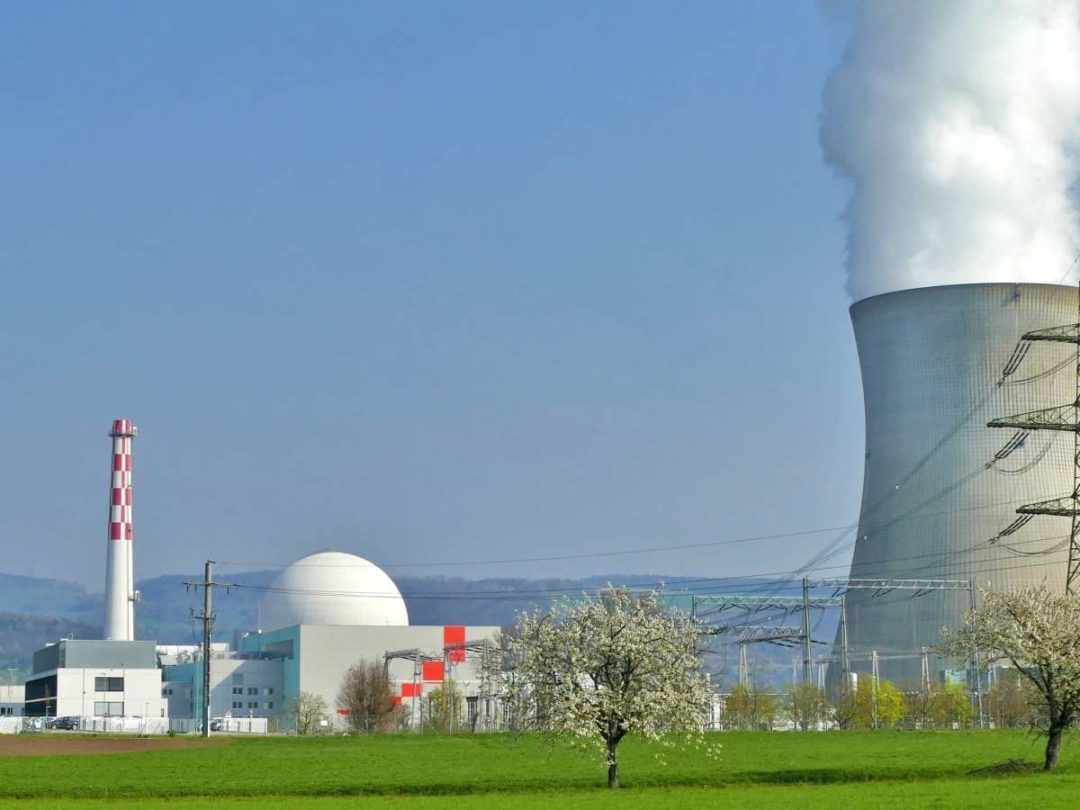The Cobalt Gold Rush and the East Palestine Disaster
Holidays in my childhood were spent at my grandparents’ farm in Plain Grove, Pennsylvania, 35 miles from East Palestine, Ohio. My grandfather’s grandfather fought at Gettysburg and homesteaded the 160-acre farm after the Civil War. My grandmother sold it in the 1960s for $13,000, lacking a male heir to do the work; but my relatives still live in the area.
I have therefore taken a keen interest in the toxic chemical disaster that resulted when a Norfolk Southern freight train derailed in East Palestine on Feb. 3, although it is not my usual line of research. The official narrative doesn’t seem to add up. Something else must have been going on, but what?
A Litany of Anomalies
The 150-car train was 1.76 miles long, and 10 of the 38 derailed cars contained hazardous materials, including vinyl chloride. The decision was made to create a hole in each of the suspect cars and allow the contents to flow into a pit, which was then lit on fire. As reported in Newsweek:
The toxic mixture of chemicals and carcinogens released … could spread many miles out from the crash site, experts say.
The chemicals—including vinyl chloride, butyl acrylate, ethylhexyl acrylate and ethylene glycol monobutyl, according to the Environmental Protection Agency (EPA)— were being carried aboard the train when it derailed. …
The fire sent up a large plume of black smoke. When burned, vinyl chloride reacts to form phosgene gas, which was used as a chemical weapon in World War I.
How far could the phosgene cloud spread? According to a researcher cited in the Newsweek article, “It depends very much on the weather conditions … but potentially well over 100 miles radius.” Vinyl chloride becomes phosgene gas, a chemical weapon, only when burned. Why was the decision made to dump and burn the chemicals? Independent journalist Eric Coppolino writes that the “decision to breach, dump and burn was totally irrational and nobody understands it. The more experience people have, the less they understand it. EPA was involved; it cannot merely be a bystander.” Observing that there are gaping holes in the official narrative, he writes [brackets mine]:
There has never been a dump and burn in railroad history, even in the decade prior to its being banned by 1980 regulations. There is always dump and remove, or decant (into tankers) and remove. Spills happen every two weeks — the burn part is unprecedented and there is rarely a need to dump. The typical approach is to take the contaminated dirt to a hazardous waste landfill.
A 2022 EPA guidance, which says how to interpret laws and regs, repeats the ban on dump and burn except only after careful consideration when there is absolutely no other alternative (which has never happened in civilian society; it happens in the military). [For more on the EPA guidance, see here.]
Fully enclosed hazmat tanker truck driver recovery operation (entirely routine procedure when there are damaged tanker cars) was initiated the night of Friday Feb. 3 — and then called off within 24 hours (on Friday night or Saturday). Who called it off and why?
Fire lines pulled from keeping tankers cool.
No samples of soot or wipe samples from inside the tanker cars — missing crucial data that would reveal the true nature of the incident.
Point source soot samples are also missing. These would also be tell-all. …
No state or federal emergencies were declared, depriving governments of emergency powers and agencies of certain kinds of authority …
Analysis of samples from PTRMS lab (a high-end mobile chemistry analysis lab) are bogged [logged? bogged down?] at Carnegie Mellon, in custody of [research professor] Albert Presto, who is not releasing them.
Pressure release valves (PRVs) were working fine, per NTSB [National Transportation Safety Board] report; the tanker cars were not in jeopardy. Other reports say the VCM [vinyl chloride monomer] was not in jeopardy of exploding and besides, they can easily decanter it into tanker trucks as is done regularly.
Five dead CTEH guys [environmental scientists] in airplane crash (eyewitnesses to point source sampling), who were at the East Palestine scene taking samples on behalf of the railroad and took samples … they died en route to the next mission. [CTEH was the company hired by Norfolk Southern to test the air in East Palestine, though the plane crash was en route to a later Ohio mission.]
People are still sick in Palestine in a way they should not be based on every other incident my source has worked on for 30 years. …
Chemicals that are currently banned from production by federal law are DDT, PCBs, PBDEs, some CFCs, all chemical warfare agents and chemicals banned from production by voluntary agreement with chemical industry are PFOS and PFOA.
OK, what really happened? —Eric Coppolino, reposted on The Truth Barrier.
Cobalt, Lithium and Appalachian Coal Mines
Another astute researcher, who has a podcast at SquirrelTribe.com, has been asking similar questions. She traces possible links to the cobalt gold rush, having found a research paper from Pennsylvania State University targeting western Pennsylvania and the adjacent Ohio border area for cobalt extraction. It seems that old abandoned coal mines are potential sources of cobalt and lithium. (My uncle was a coal miner in western Pennsylvania.)
As observed in the New York Times, “The quest for cobalt, which is essential for electric-car batteries, has fueled a cycle of exploitation, greed and gamesmanship.” And as noted on Energy.gov in April 2021, “Cobalt is considered the highest material supply chain risk for electric vehicles (EVs) in the short and medium-term.”
According to Energy.gov on April 4, 2023, “Across the country, there are billions of tons of coal waste and ash, mine tailings, acid mine drainage, and discharged water. These waste streams from mining, energy production, and related activities contain a wide variety of valuable rare earth elements and other critical minerals that can be produced and used to build clean energy technologies ….”
The SquirrelTribe podcaster points to an April 4, 2023, Associated Press article which states:
President Joe Biden’s administration is making $450 million available for solar farms and other clean energy projects at the site of current or former coal mines, part of his efforts to combat climate change.
As many as five projects nationwide will be funded through the 2021 infrastructure law …
The White House also said it will allow developers of clean energy projects to take advantage of billions of dollars in new bonuses being offered in addition to investment and production tax credits available through the 2022 Inflation Reduction Act. …
Mining areas in Appalachia and other parts of the country have long had the infrastructure, workforce, expertise and “can-do attitude” to produce energy, [Energy Secretary Jennifer Granholm] told reporters on Monday. …Rare earth elements and other minerals are key parts of batteries for electric vehicles, cellphones and other technology. Biden has made boosting domestic mining a priority as the U.S. seeks to decrease its reliance on China, which has long dominated the battery supply chain.
In November 2021, Scientific American published an article titled “Chip Shortage Threatens Biden’s Electric Vehicle Plans,” quoting Commerce Secretary Gina Raimondo, who said, “The average electric vehicle has about 2000 chips, roughly double the average number of chips in a non-electric car.” She told reporters that Biden’s plans for half of new vehicles to be electric by 2030 depends on the U.S. investing in semiconductor production – the “Creating Helpful Incentives to Produce Semiconductors (CHIPS) for America Act.”
On Jan. 21, 2022, a White House Fact Sheet said that computer chips were critical to a range of products from cars to smart phones; that the Administration had been working around the clock to expand U.S. chip manufacturing capacity; and that “Today, Intel will announce a new $20 billion factory outside Columbus, Ohio.”
The Intel chip factory has been called the largest private sector investment in Ohio history, expected to become the “largest silicon manufacturing location on the planet.” But finding the needed minerals could be a problem. As detailed by Andrew Hawkins in an August 2022 article on The Verge:
EVs need batteries, and batteries need minerals like nickel, cobalt, and lithium. The US has some of these minerals underground, and it wants to dig them up, expeditiously, so that it doesn’t have to rely as much on other countries, including China.
But this is where it gets tricky. Mining operators say they can speed up the digging process, but a bunch of regulatory roadblocks stand in their way. And environmentalists and tribal groups remain extremely skeptical that all this mining can be done in a way that doesn’t ruin the land and spoil the water. …
The Inflation Reduction Act, the Democrats’ new tax and climate bill, devotes nearly $400 billion to clean energy initiatives over the next decade, including EV tax credits and financing for companies that manufacture clean cars in the U.S. And California said it would ban the sale of new gas-powered vehicles starting in 2035, a move that over a dozen other states are expected to follow.
But the only EVs that will be eligible for the $7,500 credit are ones that are made in North America using batteries with minerals dug out of the ground in the U.S. or from its trading partners….
It may just not be possible. A US Geological Survey estimated that to fully electrify its vehicle fleet, the U.S. will need 1.27 million and 160,000 metric tons of battery-grade nickel and cobalt per year, respectively — both of which exceed total global production in 2021.
Sitting on a Rare Earth Goldmine – Blessing or Curse?
As observed on NPR.org, “Smartphones, computers and electric vehicles may be emblems of the modern world, but … their rechargeable batteries are frequently powered by cobalt mined by workers laboring in slave-like conditions in the Democratic Republic of Congo.”
Those are not conditions under which American miners would want to work, and the Congolese shouldn’t have to either. But it could be good news for the people of the East Palestine region: They may be sitting on something that is more valuable to the electric vehicle industry even than gold — cobalt and lithium.
However, suspicions also run the other way: that their lands have been rendered uninhabitable in order to devalue the property, allowing it to be acquired cheaply for cobalt recovery, either in voluntary sale or by eminent domain.
Eminent domain is an extraordinary power by which the government can take property without the owner’s consent. Generally, the only prerequisites are that the property be put to a public use and that fair compensation be paid. But the power is controversial and subject to abuse. In Iowa, it is being used over landowners’ objections to force access for carbon capture pipelines, intended to lower ethanol’s carbon emissions by transporting liquefied carbon dioxide from ethanol plants to be stored underground. Summit Carbon Solutions plans a $4.5 billion 2000-mile pipeline transporting carbon dioxide through five states.
Intentionally rendering properties uninhabitable sounds pretty far-fetched, but it is not without precedent. In a podcast titled “Blackstone STEALING Homes From Working Class Americans,” Krystal Ball states:
Danish lawmakers passed a law that would prevent landlords from jacking up prices until five years after the completion of any new renovations. This was in response to allegations from residents that Blackstone would intentionally embark upon loud and intrusive renovations with the direct goal of trying to force longtime residents out so that they could then dramatically up their rents. In Copenhagen this approach came to be known as “shake the building.” As one journalist wrote, “Imagine an apple tree shaking at the trunk to get the apples loose from the branches. In the real estate world the occupants are the apples, the apartments are the branches, and when a landlord ‘shakes the building,’ it is to get the tenants out.”
Two of the three largest institutional investors in Blackstone are Vanguard and BlackRock, which largely own each other. Vanguard and BlackRock are also the two largest shareholders of Intel Corp. And the SquirrelTribe podcaster notes that they are two of the three largest investors not only in Southern Norfork but in Netflix, which released a movie called “White Noise” in November 2022. The movie tracks the incidents in East Palestine so closely that some bloggers suggest it was “predictive programming” for that disaster. The plot includes a tanker truck carrying toxic materials that crashes into a train in a small Ohio town, creating an airborne toxic event. The film was shot almost entirely in Northeast Ohio, where several East Palestine residents worked as extras in it. One of them told CNN that the film “hits too close to home.” He said, “The first half of the movie is all almost exactly what’s going on here. Everybody’s been talking about that.”
Another suspicious development is an East Palestine ordinance passed in January that requires the owners of vacant buildings to pay a substantial fee, file a vacant building plan, and obtain an inspection for vacant buildings. Exemptions apply if they plan to sell the property.
Abandon the Ban?
Whether or not the push for U.S. cobalt and lithium mining had anything to do with the East Palestine disaster, maybe it is time to rethink the drive to force 100% of new car sales to be electric vehicles. Europe is now “all but abandoning” its engine ban. According to the Wall Street Journal on March 27:
The implausibility of a net-zero carbon energy future is becoming so obvious that even Europeans are starting to notice. Witness the weekend decision to step back from the ban on internal-combustion automobile engines that the European Union had intended to implement by 2035.
… Battery technologies don’t exist to replace fossil fuels in driving distance or ease of refueling, and no one can say if or when such batteries will materialize. …
Electric vehicles also require rare-earth minerals often sourced from dirty mines in China. They’re only as green and affordable as the electricity used to charge them. In Europe that means coal-fired power for which consumers pay a huge price owing to the costs of forcing intermittent renewables such as wind and solar into the grid.
For these reasons plus a strong dose of old-fashioned commercial self-interest, Germany’s auto industry objected to the ban on internal-combustion engines, and it’s good someone did. Resistance from Berlin and several other European governments has forced Brussels into all but abandoning its engine ban.
As the chairman of one Indigenous tribe wrote in a comment to the U.S. Department of the Interior, “The green energy revolution cannot be built on a dirty mining industry, outdated regulations, and environmental injustice.”
This article was first posted on ScheerPost.






